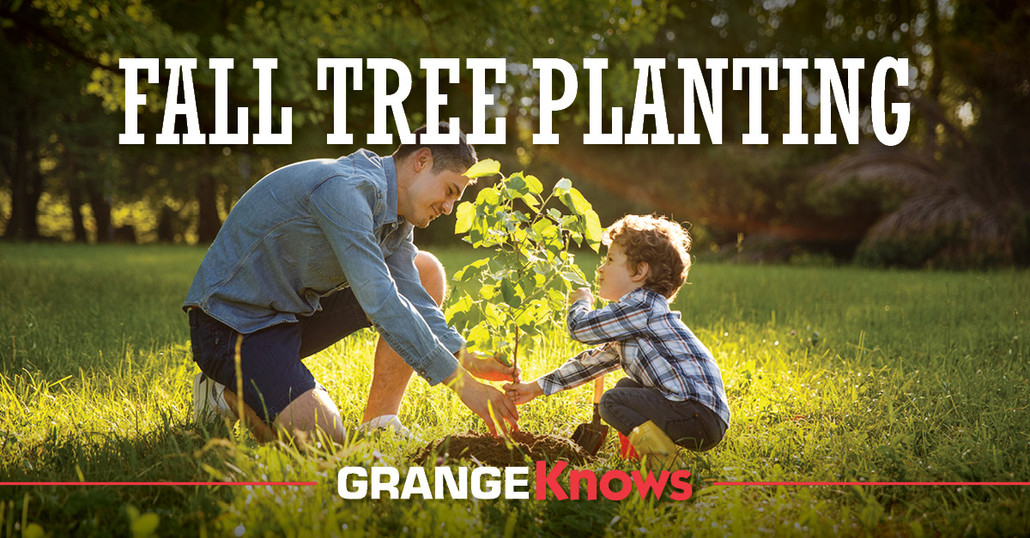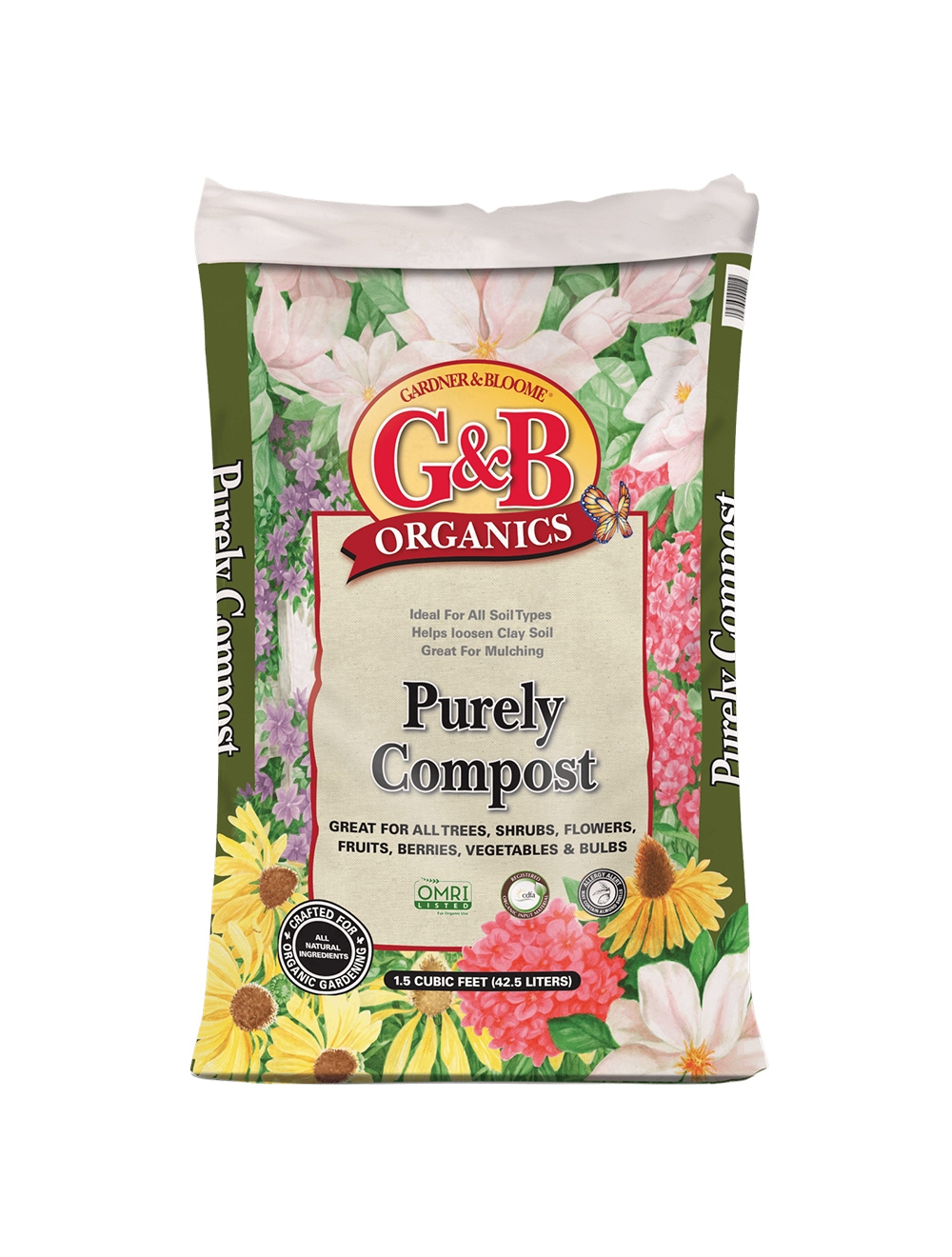
Fall Tree Planting
Posted by Grange Co-op on 4th Aug 2022
Fall Tree Planting
Spring is full of color, new growth, and typically a gardener’s most desirable and favorite time of year. However, what many individuals do not realize is fall provides unexpected benefits for tree planting!
While it may seem counter intuitive to plant during the fall when most trees are dropping their leaves, this GrangeKnows article explains just why fall is actually the ideal season for tree planting. When a tree is planted, it immediately must get to work restoring and generating a new root system. Tree planting in the spring, when trees are subsequently trying to make new leaves, can impede and diminish the odds of success. Trying to grow both leaves and roots at the same time is strenuous for the plant. However, planting trees in the fall allows the plant to establish new root structure without needing to produce leaves at the same time. Additionally, if there are fewer leaves on the tree, less water is required for the tree to intake. While growing roots still requires water, it is a much smaller amount compared to that of what leaves require. Fall tree planting allows the tree to develop its root structure before worrying about additional growth.
During the fall the soil temperature is typically cooler, encouraging stronger root growth and less evaporation. The stronger the root system, the better developed the plant will be for next spring as it begins to yield more top growth. Rate and duration of the seasons changing is not always predictable, some spring seasons pass slowly, whereas others immediately change from cold, wet weather to a hot, dry summer. The onset of these conditions too rapidly can prove extremely stressful for newly planted trees. Moreover, trees, perennials and many shrubs simply transition and adjust better when transplanted during cooler weather. We answered many questions and misconceptions about fall planting. The following section addresses common fallacies and provides further evidence into why fall is the misunderstood gardening season.
Common Misconceptions
Q. Is the onset of frost going to kill my newly-planted tree when transplanting from a container?
A. Southern Oregon is located in USDA plant hardiness zone 8b, Northern California is zone 9b and the Klamath Basin is zone 6b to zone 7a. Trees in zones 6-9 will not suffer damage from frost. It is okay for the top growth, and even the leaves to freeze over. The only time freezing would be a concern is if the ground became so cold the roots froze however, generally zones 6-9 are not susceptible to this type of deep-freeze environment. In addition, citrus and avocado trees are exceptions in these zones and do need some sort of frost protection. For smaller trees, a frost cloth can be draped over the canopy before dusk and removed in the morning. For larger, more mature trees, the cloth can be wrapped around the trunk and left on over the winter. Trees can be extremely hardy—even when damaged from frost—many of the damaged limbs still have living tissue that will recover given time. Talk with your Grange Garden Expert to discuss what options are available for frost protection if you believe your tree is at risk.
Q. Should I remove top growth when transplanting?
A. When transplanting any plant, the root system is typically damaged. This is to be expected, so a method to encourage your plant to fight back and remain strong is reducing the ratio of top growth versus root loss. However, beware of removing top growth in trees! It is important to understand that the woody part of the tree—the branches and twigs—are where a large majority of the tree’s food is stored. Yes, the root system is equally as important, but the top growth is vital to a tree’s food reserves. Root growth requires energy; the plant pulls energy from its food reserves where a majority is located in the above ground portion. Often trees will mysteriously loose some or all of their leaves consequently after transplanting. The gardener assumes the tree has died, when in actuality it has dropped its leaves to focus its energy on rebuilding its root system. Generally, trees will not ‘leaf-out’ until the following spring, only then do they begin to look alive and well. Don’t be quick to abandon your tree, it may just be preparing itself for a successful spring!
Preparing Soil for Successful Tree Growth
Providing compost or mulch for your newly planted tree not only keeps it healthier but gives trees a nicer look and reduces landscape maintenance as well.
Mulch helps to conserve moisture-loss from evaporation, keeps the soil well aerated, and reduces water runoff and soil erosion. Mulch acts as insulation for the soil by keeping the root system warmer in the winter and cooler in the summer. Furthermore, it creates a more stable environment for increased amounts of earthworms and soil microorganisms, benefitting your tree. Continue to keep soil and mulch moist during the first year. Avoid overwatering to the extent the soil around your tree is soggy. However, in dry weather—depending on soil drainage and evaporation—water generously, this is typically every 7-10 days.
Best Trees to Plant in USDA Plant Hardiness Zone 6-9
Trees we recommend that will thrive by planting in the fall include: maple, birch, redbud, dogwood, magnolia, aspen, flowering plum, flowering cherry, ash, crabapple, elm, linden, fir, pines, Japanese snow bell, tulip tree, and spruces. Many of these varieties can be found at your local Grange Co-op. Trees are esteemed in landscaping, they provide aesthetic value to any home, offer foliage that provides shade in the summer, as well as oxygenating the air and photosynthesizing. If you have any further questions regarding successful planting, never hesitate to speak with a Grange Gardening Expert
 when choosing which tree is best for you.
when choosing which tree is best for you.
Helpful Hints
- The best months for fall tree planting range anytime between September to November.
- Always check with your local utility companies to locate any underground lines prior to digging.
- Prior to transplanting, ensure the tree’s rootball is well-watered and moist, this will keep the soil adhered to the roots. Dig a hole large enough so the roots are not too confined, usually this is about two times the size of the tree’s rootball. Mixing G&B Purely Compost, with a half-and-half ratio of native soil from your newly dug hole is ideal for transplanting success. Work the soil down between the roots of the tree as not to leave any air pockets. Fill soil and compost mixture up to the trees natural soil line. Water well, making sure your soil does not dry out.
- If you have an irrigation system set up, it most likely is prepared for watering turf, shallow-rooted plants, and shrubs. This amount of watering is most likely not enough for your new tree. Luckily fall often brings plentiful amounts of rainfall, but make sure you are still checking soil conditions and adding or extending watering sessions, if necessary.
